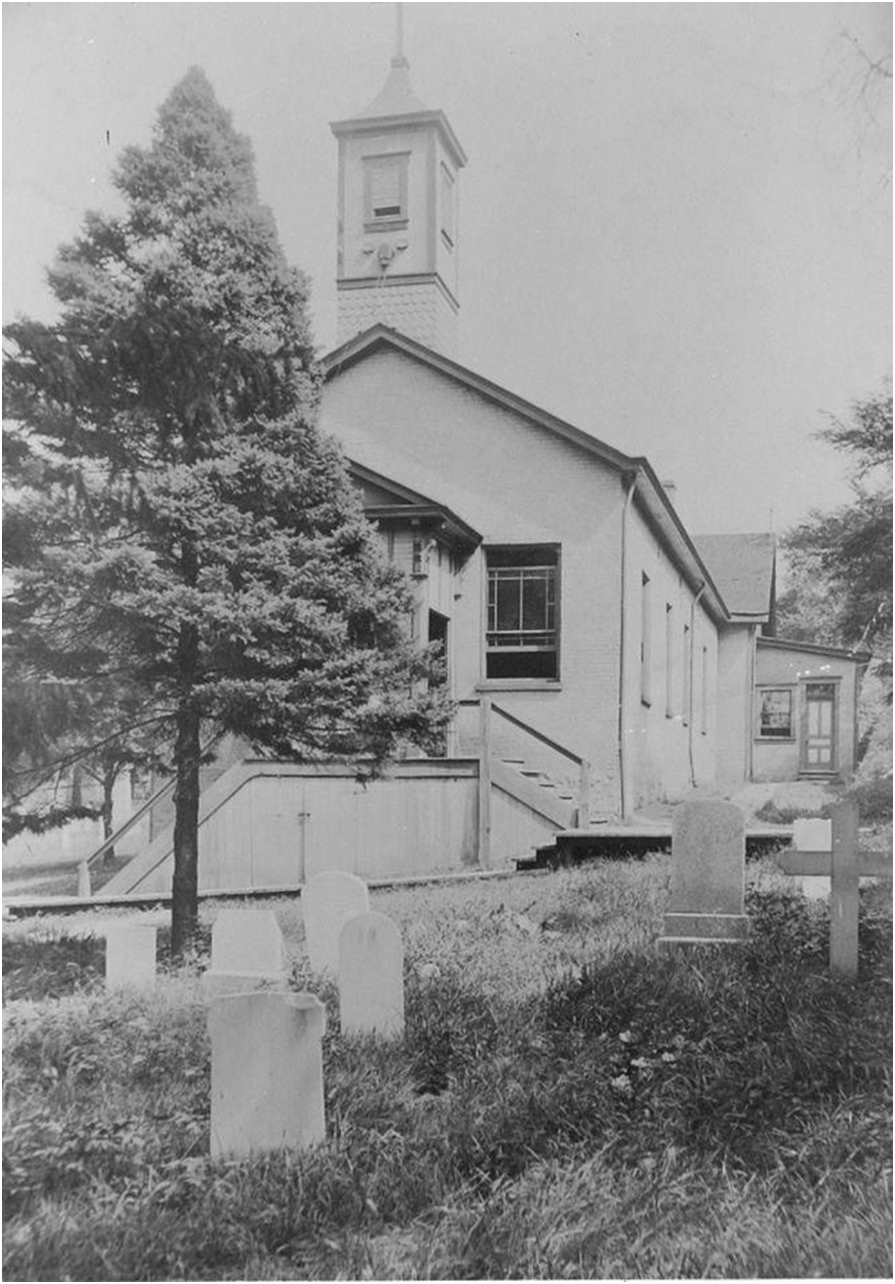 St. Philip Parish is one of the oldest parishes in the Diocese of Pittsburgh. In fact, when it was established in 1839, it was the Archbishop of Philadelphia, the Bishop Francis Patrick Kenrick, who dedicated the original church, which was located in the center of today’s parish cemetery. St. Philip pre-dates the Diocese of Pittsburgh and was the only Catholic church located on the western side of Pittsburgh beyond the Ohio River for many years.
St. Philip Parish is one of the oldest parishes in the Diocese of Pittsburgh. In fact, when it was established in 1839, it was the Archbishop of Philadelphia, the Bishop Francis Patrick Kenrick, who dedicated the original church, which was located in the center of today’s parish cemetery. St. Philip pre-dates the Diocese of Pittsburgh and was the only Catholic church located on the western side of Pittsburgh beyond the Ohio River for many years.
It was in 1838, that a lot, containing one acre and 95 perches, was acquired from Philip Smith, a Philadelphia merchant, “for the use and benefit of the Roman Catholic congregation of St. Clair Township and of the neighborhood, to be used, occupied, and enjoyed by them as a cemetery or burying ground, and also for the erection thereon of a church for the use and benefit of said congregation and of the Roman Catholic religion forever.”
From the Diary and Visitation Record of Bishop Kenrick, 1839: “July the twenty-fifth day. I dedicated to divine service a church under the invocation of St. Philip the Apostle, distant about four miles from Pittsburg, near Chartier’s Creek. The ground (for this church) was given by Philip Smith, a truly worthy Catholic, and esteemed for his sincere and upright life. The Rev. John O’Reilly celebrated the High Mass; and there were present also the Rev. Edward Garland and the Rev. Joseph Cody. Jeremiah Dunlevy, a very good man who lives not far from the church, entertained us at dinner.”
Families comprising the early congregation were: the Flanigans, Dunns, Campbells, Doyles, McCabes, McDermotts, Murphys, Dunlevys, Coleman, Rodgers, Bourkes, Bonnetts and Walshes. Many of these early parishioners are buried in the church cemetery.
When the Diocese of Pittsburgh was established in 1843, St. Philip was one of only seven churches listed in Allegheny County, according to the journal of Bishop Michal O’Connor. For the first year the care of the new church was in the hands of Rev. John O’Reilly, then pastor of St. Paul Church, Pittsburgh.
For the first year the care of the new church was in the hands of Rev. John O’Reilly, then Pastor of St. Paul, Pittsburgh. Late in 1840, however, the Rev. Andrew Gibbs took charge, celebrating Mass monthly, dividing his time between two other widely separated parishes, those at Pine Creek and Wexford, making his journey on horseback. Father Gibbs was one of the most remarkable of the pioneer priests of this district.
The same is true of the next priest who served St. Philip, the Rev. Thomas McCullagh, who was the first priest ordained in and for the newly established Diocese of Pittsburgh. He shepherded the flock at St. Philip for a few years after his ordination. Rev. John Powell came in 1846, Father John Tuigg, later becoming Bishop of Pittsburgh, came in 1850 and Rev. James McGowan was assigned to St. Philip in 1851. St. James Parish, Temperanceville, now Pittsburgh’s West End, was formed in 1854 and for the next twelve years St. Philip was a mission of St. James. Rev. James McGowan was in charge of the two churches in 1854, Rev. John Baptist O’Connor and Rev. Cornelius Sheehan in 1855, Rev. John Hackett in 1856-57, and Rev. Matthew Carroll from 1857 to 1870. Under Fr. Carroll the original church was lengthened twenty-five feet.
The parish of St. Luke had been established in nearby Mansfield, now Carnegie, in 1866 and St. Philip was made a mission of that parish in 1870. Pastors who had charge of St. Philip were Rev. John Scanlon, 1867-71, Rev. W.A. Nolan, 1871-73, and Rev. Peter May, 1873-74. In 1874, St. Philip was given its first resident pastor in the person of Rev. John Ward, who lived in a small house on Thomas Street, and who remained less than a year. On March 15, 1874, Father Ward baptized John McCabe, son of Patrick and Margaret McGovern. This was the first baptism in the then St. Philip Parish. Father Ward was succeeded by Fr. Kaib.
Father Kaib installed the main altar in the church and during his pastorate a private school for the children of the parish was opened in a stone house on Afton Avenue. During his pastorate he witnessed the first marriage on November 19, 1874. The couple were George Sweitzer and Bridget Mulaney.
Until 1878, there was no resident pastor, but a priest came every Sunday from St. Luke or St. Mary (German), McKees Rocks. Rev. James Keenoy became the pastor in 1878. He found a congregation of forty families. He built the first rectory which would last until 1941. He build and opened a parish school, with the Sisters of Charity in charge. This school, started in 1887, was continued until 1892, when the depression of that year forced its closing.
Under Father Keenoy the second addition to the little church was made, providing a sanctuary with two side altars. Father Keenoy also secured from Charles Craft, for whom Crafton Borough is named, the gift of a piece of property adjoining the original plot. Part of this was set aside for a cemetery and on the remainder the new church and school buildings were afterward erected. During the pastorate of Father Keenoy the Sacrament of Confirmation was administered for the first time by Bishop John Tuigg on November 24, 1878.
Father Keenoy left in 1893 and was succeeded by Rev. J.F. Regis Canevin, who was to become Coadjutor Bishop and later Bishop of Pittsburgh. Fr. Canevin was only at St. Philip for one year. Rev. P.J. O’Neil became pastor in 1895 and remained until 1898. During his pastorate he established weekend religious classes for the children, taught by the Sisters of Mercy. This arrangement continued until the first building of the present school was built in 1915.
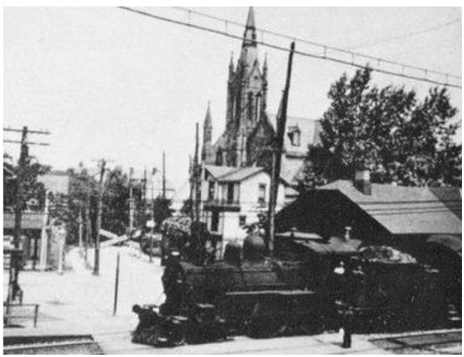 In 1898, a young priest, ordained but ten years, came to St. Philip. His name was Father William Charles Kelty. Between 1898 and 1953, Father Kelty undertook a complete renewal and rebuilding program that gave the parish its present church, dedicated by Bishop Canevin on February 8, 1906. The gothic structure, designed by William P. Ginther of Akron, is build of stone in cruciform design and it seats 800 people. The building committee as composed of P. Walsh, Bernard Rogers, Matthew Campbell, P. W. Hayes, F. R. Schneider, J. J. Boyle, W. C. O’Reilly, M. McMahon, H. Kumer, T. Fitzpatrick and John Bourke. The contract price for the building, exclusive of inner decoration, was $56,000.
In 1898, a young priest, ordained but ten years, came to St. Philip. His name was Father William Charles Kelty. Between 1898 and 1953, Father Kelty undertook a complete renewal and rebuilding program that gave the parish its present church, dedicated by Bishop Canevin on February 8, 1906. The gothic structure, designed by William P. Ginther of Akron, is build of stone in cruciform design and it seats 800 people. The building committee as composed of P. Walsh, Bernard Rogers, Matthew Campbell, P. W. Hayes, F. R. Schneider, J. J. Boyle, W. C. O’Reilly, M. McMahon, H. Kumer, T. Fitzpatrick and John Bourke. The contract price for the building, exclusive of inner decoration, was $56,000.
Other buildings undertaken in Father Kelty’s program included a school in 1915, the addition of classrooms, a gymnasium and bowling alley to the school in 1929 and a new rectory in 1941. Father Kelty encouraged the Sisters of Charity of Greensburg to staff what was considered the finest school building in the Pittsburgh diocese. He saw pupil enrollment increase from 200 students to over 1200.
At the beginning of 1953, Father Kelty, feeling the weight of his ninety years and realizing that he could no longer carry on with his usual vigor, petitioned the Bishop of Pittsburgh, the Most. Rev. John Dearden, to accept his resignation. On January 15, 1953, the Bishop agreed and Father Kelty became the Pastor Emeritus of the parish, whose pastor he had been for fifty-five years. On January 22, 1953, Father Kelty was succeeded by Father William McCashin.
Just as time had taken its toll of Father Kelty, so too had the buildings erected by him felt the wear of years. The fifty year old lighting system in the church and the coal boiler were replaced. The church basement was remodeled to accommodate the growing Sunday Mass attendance and served as a second sanctuary. A new school building with six classrooms and a modern cafeteria was dedicated in September 1954 by Bishop Dearden. To make it possible to erect this third and final addition to the school, many bodies had to be transferred from that part of the parish cemetery in order to make room for this new addition.
On June 21, 1955 God called to Himself Father Kelty, the venerable Pastor Emeritus, at the age of ninety-three. He was laid to rest in Calvary Cemetery in Pittsburgh after a Solemn Pontifical Mass celebrated by Bishop Ralph Hayes, Bishop of Davenport, Iowa, a native son of St. Philip Parish.
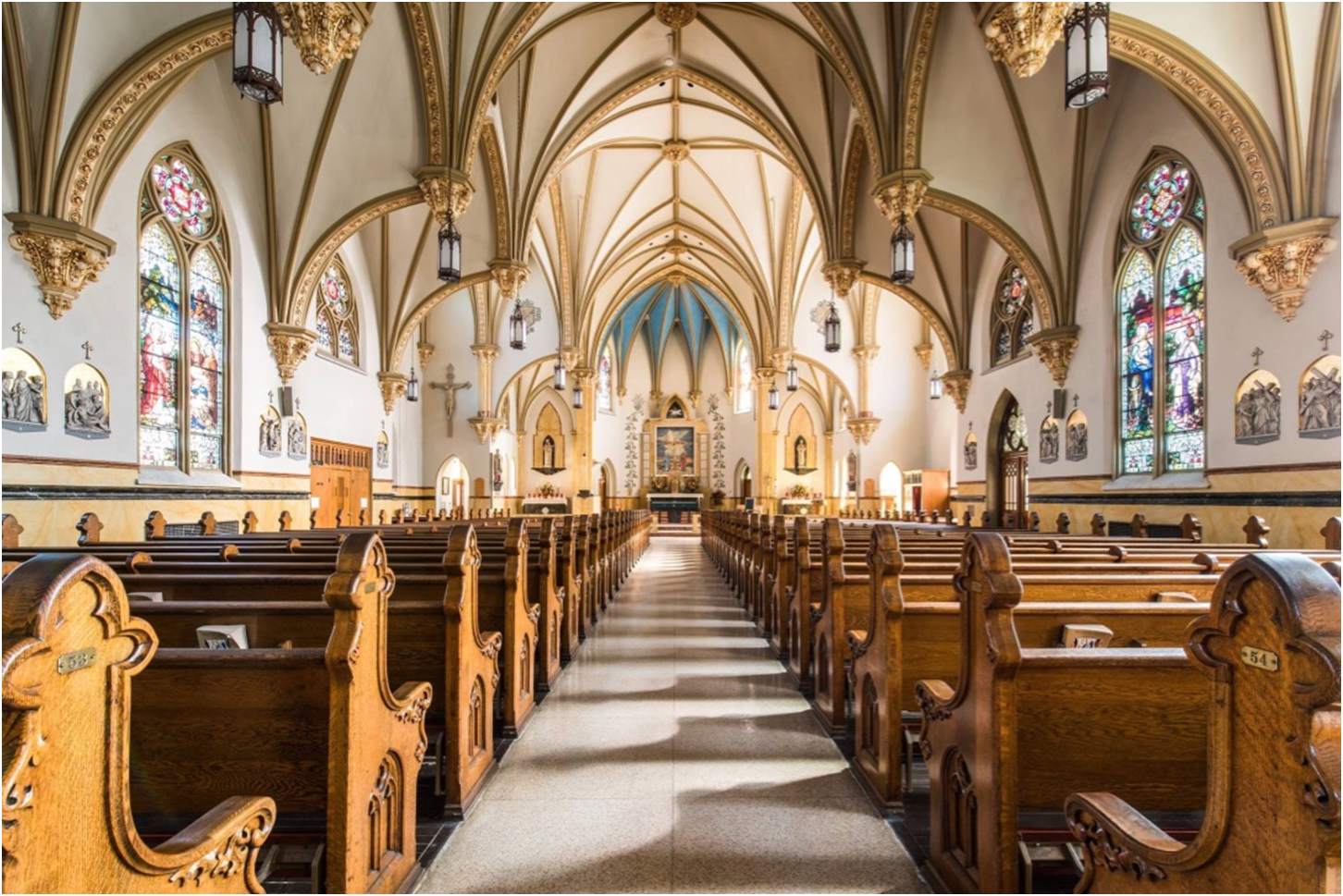
To commemorate the golden jubilee of the dedication of the church in 1956, it was decided to remodel and redecorate the interior. Three marble altars, a marble pulpit and communion rail were installed. The entire church was repainted, the pews were brought back to the original wood and refinished and new confessionals replaced the old ones. The original Moeller organ, a gift of Andrew Carnegie, was replaced by the present Casavant instrument.
As strict with himself as he was with others, Father McCashin wisely saved to place the parish in excellent financial condition, for he knew that problems were coming. These were not to be his problems. While on his way to pick up flowers for the Christmas Altar decorations Father McCashin was seriously injured in a car accident. Age and injuries were against him and on February 7, 1967, he died in Mercy Hospital.
The Rev. Vincent Leonard, Auxiliary Bishop of Pittsburgh, was appointed to succeed Father McCashin in 1967. He served as pastor until he was called to be Bishop of Pittsburgh in 1970. By 1968, the congregation at St. Philip had grown so large that it was decided to divide the parish. The Ascension Parish was established in Ingram and Father Glen Conner, assistant pastor of St. Philip, was appointed to head the new parish.
Msgr. Robert Garland followed Bishop Leonard as pastor in 1970. He came at a time when the decisions of Vatican II introduced many changes in the liturgy and practices of the Church. Msgr. Garland shepherded the congregation through this difficult period. With the division of the parish it was no longer necessary to use the church basement for Masses, so the space was converted to a parish hall, and it was dedicated to the memory of Father Kelty on February 25, 1973. Other improvements made by Msgr. Garland included the painting of the church interior and the construction of a ramp entrance into the church. Kindergarten and pre-school programs were begun in the parish school.
In 1986, after seventeen years as Pastor, Msgr. Garland was reassigned to become Pastor of St. Mary, Cecil. He was succeeded by Father William Winter, formerly Pastor of Holy Innocents, Sheraden.
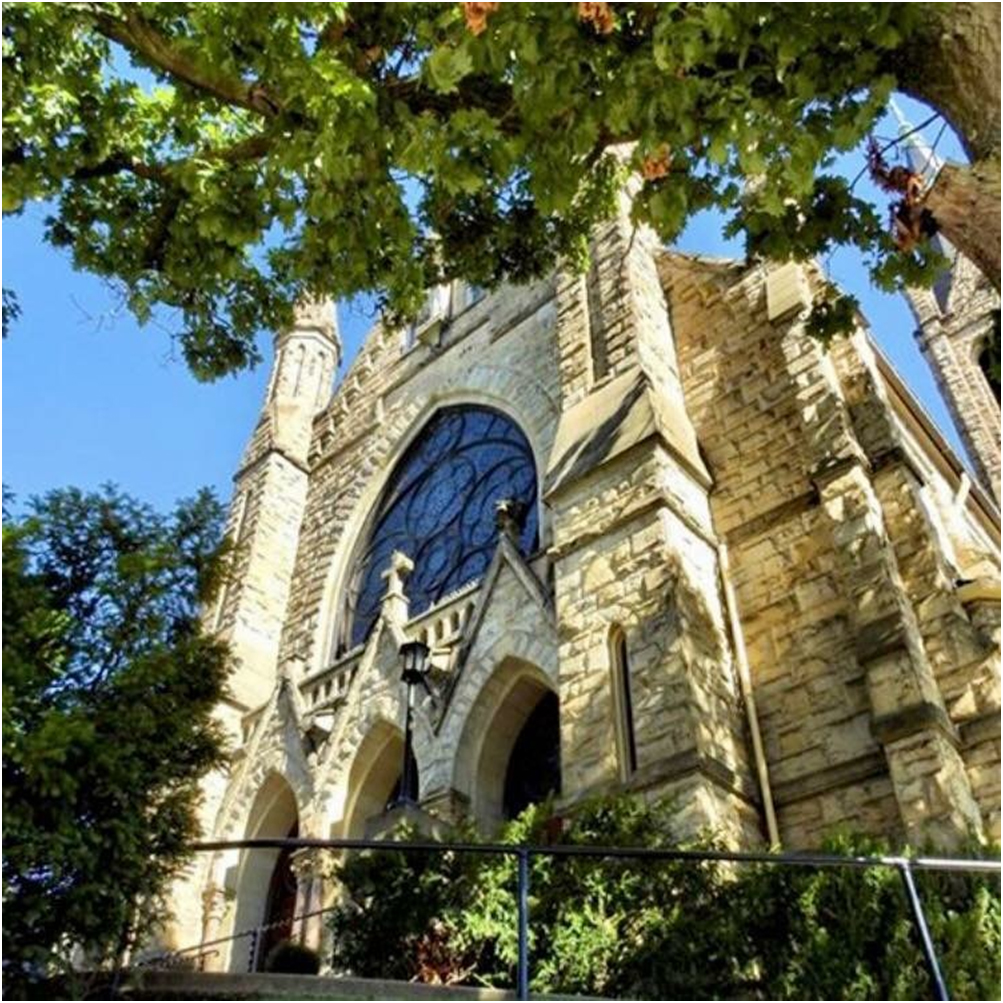 In the short time that Father Winter had been at St. Philip was successful in leading the congregation to a better understanding of the mandates of Vatican II. His most notable project was the restoration of the church’s rose window in 1987, at a cost of $90,000. Other undertakings included repairs to the school roof, new windows for the school, and repainting the church in time for the anniversary celebration. Father Winter was named the Auxiliary Bishop of Pittsburgh in December 1988. He continued to serve St. Philip until he was made Pastor of Sacred Heart Parish, Shadyside, 1990.
In the short time that Father Winter had been at St. Philip was successful in leading the congregation to a better understanding of the mandates of Vatican II. His most notable project was the restoration of the church’s rose window in 1987, at a cost of $90,000. Other undertakings included repairs to the school roof, new windows for the school, and repainting the church in time for the anniversary celebration. Father Winter was named the Auxiliary Bishop of Pittsburgh in December 1988. He continued to serve St. Philip until he was made Pastor of Sacred Heart Parish, Shadyside, 1990.
Rev. Paul Spisak replaced Bishop Winter as Pastor of St. Philip. For four years, Father Spisak made continual improvements to the parish, including a new gym floor, a new furnace in the church, and other minor repairs. In January 1994, Father Spisak was reassigned and on February 7, 1994, Rev. James Schmidt was named Pastor.
Father Schmidt served as Pastor until 2000, and served the congregation well. He also undertook many minor upkeep projects on the, parish grounds and buildings. Father Schmidt went on sabbatical in February 2000, and the Rev. Walter Dworak was named Pastor.
Father Dworak resurfaced a portion of the school roof and made continued improvements to the existing parish structures. He help to refurbish a number of the stained glass windows in the church and oversaw the campaign to repair and refurbish the main bell tower of the church. He also broadened the parish’s ministries to the sick and homebound. Father Dworak was the first Pastor in quite a long time to have no assistant priests at the parish. He was charged with carrying out the work that two or even three priests had done in the past.
In February 2006, the parish celebrated the centennial anniversary of the dedication of the church building. The congregation gathered together to celebrate this milestone with a special Mass that was celebrated by Bishop Donald Wuerl. A grand reception followed at Chartiers Country Club.
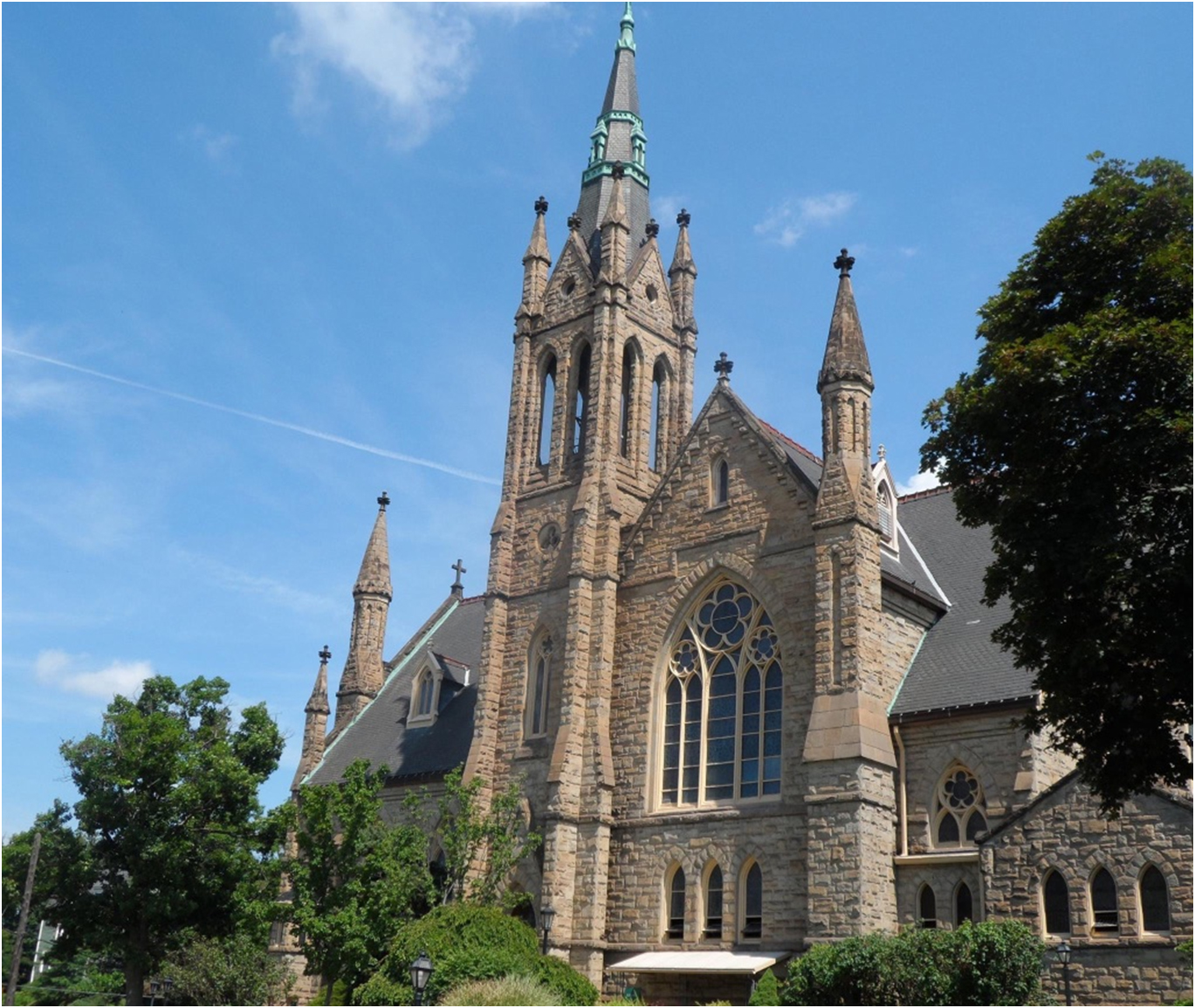 In the Fall of 2015, Father Dworak retired and concluded his tenure as Pastor of St. Philip Parish. Before his retirement, he was working with Father John Gizler, then Pastor of the Parishes of Ascension, Guardian Angels and Holy Innocents, along with the Diocese of Pittsburgh, in order to prepare for the upcoming On Mission initiative that would eventually bring all four parishes together.
In the Fall of 2015, Father Dworak retired and concluded his tenure as Pastor of St. Philip Parish. Before his retirement, he was working with Father John Gizler, then Pastor of the Parishes of Ascension, Guardian Angels and Holy Innocents, along with the Diocese of Pittsburgh, in order to prepare for the upcoming On Mission initiative that would eventually bring all four parishes together.
Father John Gizler, III, was appointed Administrator of St. Philip Parish in September 2015 in addition to his role as Pastor of the West End Catholic Community, which comprised the Ascension Parish, Ingram, Guardian Angels Parish, Crafton Heights, and Holy Innocents Parish, Sheraden. Father Frederick Gruber was appointed Parochial Vicar. Father Robert Herrmann and Father Joseph Scheib were in-residence at the Guardian Angels Rectory. Along with a hard-working collaborative committee and various diocesan officials, a formal petition to Bishop Zubik was presented in May 2016 to merge all four parishes to form the St. Philip Grouping. After consultation with the Diocesan Presbyteral Council, Bishop Zubik granted the decree to suppress the Parishes of Ascension, Guardian Angels and Holy Innocents on August 1, 2016. The remaining church buildings would be Ascension and St. Philip, thus creating the new St. Philip Parish.
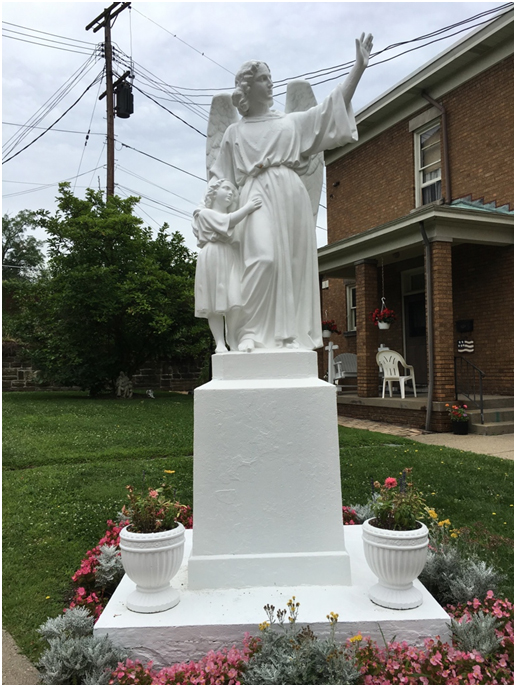 Under Father Gizler’s leadership, a number of important projects have taken place such as the refurbishment of the Nativity and Resurrection stained glass windows in St. Philip Church, the removal of the 100 year old courtyard and its resurfacing, the replacement and installation of newly designed doors to Ascension Church, the installation of new windows in the St. Philip Rectory, the resurfacing of the St. Philip parking lots, the centralization of the Administrative Office to the Berry Street location, security upgrades to St. Philip School, refurbishment to the century old cemetery wall along Crennell Avenue, the total replacement of the retaining wall between St. Philip School and the Knights of Columbus Hall, the installation of a new sound system, lighting and boiler in St. Philip Church, the replacement of concrete sidewalks on West Crafton Avenue as well as around St. Philip Church, providing the Hope House for use by the St. Vincent dePaul Society, and various upgrades to the St. Philip Rectory.
Under Father Gizler’s leadership, a number of important projects have taken place such as the refurbishment of the Nativity and Resurrection stained glass windows in St. Philip Church, the removal of the 100 year old courtyard and its resurfacing, the replacement and installation of newly designed doors to Ascension Church, the installation of new windows in the St. Philip Rectory, the resurfacing of the St. Philip parking lots, the centralization of the Administrative Office to the Berry Street location, security upgrades to St. Philip School, refurbishment to the century old cemetery wall along Crennell Avenue, the total replacement of the retaining wall between St. Philip School and the Knights of Columbus Hall, the installation of a new sound system, lighting and boiler in St. Philip Church, the replacement of concrete sidewalks on West Crafton Avenue as well as around St. Philip Church, providing the Hope House for use by the St. Vincent dePaul Society, and various upgrades to the St. Philip Rectory.
Upon the closure of the Guardian Angels Parish, Father Joseph Scheib moved into the St. Philip Rectory and Father Gruber was reassigned in 2017. Father George Wilt, retired priest of the diocese, came to live at St. Philip Rectory for 15 months during the renovation of Saint John Vianney Manor. In October 2018, Father Francis Murhammer returned to St. Philip Parish as Senior Parochial Vicar, thirty years after his first assignment to the parish. St. Philip Parish continues to grow and thrive as a center of faith, formation and ministry as we continue in this new era of On Mission for The Church Alive! throughout the Diocese of Pittsburgh.